arrays.ppt
- 1. Course Name: Fundamentals of Computing Course Code: CS16 Credits: 2:0:0 UNIT 4 Term: January-March 2021 M.S. Ramaiah Institute of Technology (Autonomous Institute, Affiliated to VTU) Department of Computer Science and Engineering
- 2. User Defined Functions: ïķ Introduction, ïķNeed for User-Defined Functions, ïķ Elements of User-Defined Functions, ïķ Definition of Functions, ïķReturn Values and Their Types, Function Calls, ïķCategories of Functions, ïķ Recursion. Department of Computer Science and Engineering
- 3. âĒA function is a block of code that performs a specific task. âĒA large C program is divided into basic building blocks called C function. C function contains set of instructions enclosed by â{ }â which performs specific operation in a C program. âĒThere are many situations where we might need to write same line of code for more than once in a program. This may lead to unnecessary repetition of code, bugs and even becomes boring for the programmer. So, C language provides an approach in which you can declare and define a group of statements once in the form of a function and it can be called and used whenever required. âĒC allows you to define functions according to your need, These functions are known as user- defined functions. Department of Computer Science and Engineering
- 4. C functions can be classified into two categories: âĒLibrary functions âĒUser-defined functions âĒLibrary functions are those functions which are already defined in C library, example printf(), scanf(), strcat() etc. You just need to include appropriate header files to use these functions. These are already declared and defined in C libraries. âĒA User-defined functions on the other hand, are those functions which are defined by the user at the time of writing program. These functions are made for code reusability and for saving time and space. Department of Computer Science and Engineering
- 5. Benefits/Need of Using Functions: âĒIt provides modularity to your program's structure. âĒA large C program can easily be tracked when it is divided into functions. âĒIt makes your code reusable. You just have to call the function by its name to use it, wherever required. âĒIn case of large programs with thousands of code lines, debugging and editing becomes easier if you use functions. âĒIt makes the program more readable and easy to understand. âĒIt is used to avoid rewriting same logic/code again and again in a program. Department of Computer Science and Engineering
- 6. There are a few steps that need to be follow in order to create a function: Function Declaration: Like variable declaration, a function declaration specifies the type of the function. Function Definition: A function needs to be defined in order to be used. It is the actual function that we are going to work on. Function parameters: They contain values or arguments that are sent by the calling function. Function call: It is how we are going to call the function to get executed. Department of Computer Science and Engineering
- 7. A function declaration specifies: âĒThe type of the function or return type, âĒThe function name and âĒIts parameters. âĒFunction return type: It indicates what type of value the function will return. Eg: int, double, float, char, etc. A function with void return type does not return any value. âĒFunction name: A function name can be anything the user decides. Usually, a function name is kept according to the function it performs. âĒFunction Parameter: It contains arguments and may or may not take values from the calling function. Function Declaration: return_type function_name(parameters); âĒIt is usually done at the top of the program and indicates how the function shall be called. âĒ The actual function definition can be present anywhere in the program. Department of Computer Science and Engineering
- 8. Function Definition return_type function_name(parameter) { //body of the function } âĒThe first line is known as function header âĒreturntype functionName(type1 parameter1, type2 parameter2) âĒThe Second line is function body It contains the declarations and the statements(algorithm) necessary for performing the required task. The body is enclosed within curly braces { ... } and consists of three parts. âĒlocal variable declaration(if required). âĒfunction statements to perform the task inside the function. âĒa return statement to return the result evaluated by the function(if return type is void, then no return statement is required). Elements of User-Defined Functions: 1. Function name 2. Function Return Type 3. List of parameters 4. Local variables 5. C Function statements 6. Return Statement Department of Computer Science and Engineering
- 9. There are two types of function parameters/Arguments: âĒFormal Parameter: The parameter which is written at the function definition is known as a formal parameter. âĒActual Parameter: The parameter that is written at the function call is known as the actual parameter. int sum(int,int); Function Declaration/ Function Prototype void main() { int a ,b ; sum(a ,b );//actual parameter Calling Function (Function Call) } int sum(int x, int y)//formal parameter Called Function(Function Definition ) { //body of the function } Return Values and Their Types, Function Calls Department of Computer Science and Engineering
- 10. Return Type: âĒWhen a function is declared to perform some sort of calculation or any operation and is expected to provide with some result at the end, in such cases, a return statement is added at the end of function body. âĒReturn type specifies the type of value(int, float, char, double) that function is expected to return to the program which called the function. âĒNote: In case your function doesn't return any value, the return type would be void. Returning a value from function: âĒA function may or may not return a result. But if it does, we must use the return statement to output the result. return statement also ends the function execution, hence it must be the last statement of any function. If you write any statement after the return statement, it won't be executed. Department of Computer Science and Engineering
- 11. A function needs to be called by the calling function in order to get executed. There are two ways in which a function can be called: Call by reference: In this method, the address of the parameter or argument is put in the formal parameter and then the values are accessed using the address in the actual parameter. Call by reference is done as follows: int sum(int *x,*y)// *x is the address which points to the value of the variable x stored in the address. Call by value: In this method, the actual values are passed as an argument in the formal parameter and are accessed in the actual parameter. int sum(int x,int y) // x is the variable which contains the value so the value is directly passed to the function Note:- The difference between the above two is that, when we pass by reference then no new copy of the value is created i.e. the passed variable is used and even if we do not return anything from the called function then also the changes will reflect inside the calling function. Function Call Department of Computer Science and Engineering
- 12. Passing Arguments to a function Returning a value from function Department of Computer Science and Engineering Department of Computer Science and Engineering
- 13. Categories of Functions There can be 4 different types of user-defined functions, they are: âĒFunction with no arguments and no return value âĒFunction with no arguments and a return value âĒFunction with arguments and no return value âĒFunction with arguments and a return value Department of Computer Science and Engineering
- 14. Categories of Functions 1. With arguments and with return values function declaration: int function ( int ); function call: function ( a ); Function with argument function definition: int function( int a ) { statements; return a; Function with return value } Department of Computer Science and Engineering
- 15. Categories of Functions 2. With arguments and Without return values function declaration: void function ( int ); function call: function( a ); Function with argument function definition: void function( int a ) { statements; Function without return value } Department of Computer Science and Engineering
- 16. Categories of Functions 3. Without arguments and without return values function declaration: void function(); function call: function(); Function without argument function definition: void function() { statements; Function without return value } Department of Computer Science and Engineering
- 17. Categories of Functions 4. Without arguments and With return values function declaration: int function ( ); function call: function ( ); Function without argument function definition: int function( ) { statements; return a; Function with return value } Department of Computer Science and Engineering
- 18. What is Recursion? Recursion is a special way of nesting functions, where a function calls itself inside it. We must have certain conditions in the function to break out of the recursion, otherwise recursion will occur infinite times. #include<stdio.h> int factorial(int x); //declaring the function void main() { int a, b; printf("Enter a number..."); scanf("%d", &a); b = factorial(a); //calling the function named factorial printf("%d", b); } int factorial(int x) //defining the function { int r = 1; if(x == 1) return 1; else r = x*factorial(x-1); //recursion, since the function calls itself return r; } Department of Computer Science and Engineering
- 19. The scope, visibility and lifetime of variables: âĒ Automatic variables, âĒStatic Variables, âĒRegister Variables, and âĒExternal Variables. Department of Computer Science and Engineering
- 20. âĒScope is defined as the area in which the declared variable is âavailableâ. âĒThe lifetime of a variable is the period of time in which the variable is allocated a space (i.e., the period of time for which it âlivesâ). âĒVisibility is the âaccessibilityâ of the variable declared. The scope of a variable is the part of the program within which the variable can be used. So, the scope describes the visibility of an identifier within the program. The lifetime of a variable or function is the time duration for which memory is allocated to store it, and when that memory is released. It also refered as extent of a variable. Department of Computer Science and Engineering
- 21. There are two basic types of scope: local scope and global scope. âĒA variable declared outside all functions is located into the global scope. âĒAccess to such variables can be done from anywhere in the program. âĒThese variables are located in the global pool of memory, so their lifetime coincides with the lifetime of the program. âĒA variable declared inside a block (part of code enclosed in curly brackets) belongs to the local scope. âĒSuch a variable is not visible (and therefore not available) outside the block, in which it is declared. âĒThe most common case of local declaration is a variable declared within a function. A variable declared locally, is located on the stack, and the lifetime of such a variable is equal to the lifetime of the function. Department of Computer Science and Engineering
- 22. Register variables: belong to the register storage class and are stored in the CPU registers. The scope of the register variables is local to the block in which the variables are defined. The variables which are used for more number of times in a program are declared as register variables for faster access. Example: loop counter variables. register int y=6; Static variables: Memory is allocated at the beginning of the program execution and it is reallocated only after the program terminates. The scope of the static variables is local to the block in which the variables are defined. Department of Computer Science and Engineering
- 23. #include<stdio.h> int number; // global variable void main() { number = 10; printf("I am in main function. My value is %dn", number); fun1(); fun2(); } /* This is function 1 */ fun2() { printf("nI am in function fun2. My value is %d", number); } /* This is function 1 */ fun1() { number = 20; // local variable printf("I am in function fun1. My value is %d", number); } I am in function main. My value is 10 I am in function fun1. My value is 20 I am in function fun2. My value is 20 Department of Computer Science and Engineering
- 24. #include <stdio.h> void decrement() Function Definition { static int a=5; a--; printf("Value of a:%dn", a); } int main() { int i , n=4; for(i=0; i<n; i++) decrement(); Function Call return 0; } Example for Static variable Value of a:4 Value of a:3 Value of a:2 Value of a:1 #include <stdio.h> void decrement() { int a=5; a--; printf("Value of a:%dn", a); } int main() { int i , n=4; for(i=0; i<n; i++) decrement(); return 0; } Value of a:4 Value of a:4 Value of a:4 Value of a:4 With Static variable Without Static storage class Department of Computer Science and Engineering
- 25. #include<stdio.h> void test(); //Function declaration int main() { test(); test(); test(); } void test() { static int a = 0; a = a + 1; printf("%dt",a); } OUTPUT: 1 2 3 #include<stdio.h> void test(); //Function declaration int main() { test(); test(); test(); } void test() { int a = 0; a = a + 1; printf("%dt",a); } Department of Computer Science and Engineering With Static variable Without Static storage class
- 26. What is a Storage Class? âĒA storage class represents the visibility and a location of a variable. It tells from what part of code we can access a variable. âĒThere are total four types of standard storage classes. The table below represents the storage classes in 'C'. Department of Computer Science and Engineering
- 27. The variables defined using auto storage class are called as local variables. âĒ Auto stands for automatic storage class. A variable is in auto storage class by default if it is not explicitly specified. âĒThe scope of an auto variable is limited with the particular block only. #include <stdio.h> int main( ) { auto int j = 1; { auto int j= 2; { auto int j = 3; printf ( " %d ", j); } printf ( "t %d ",j); } printf( "%dn", j); } OUTPUT: 3 2 1 #include <stdio.h> int main( ) { int j = 1; { int j= 2; { int j = 3; printf ( " %d ", j); } printf ( "t %d ",j); } printf( "%dn", j); } OUTPUT: 3 2 1
- 28. Extern storage class is used when we have global functions or variables which are shared between two or more files. Keyword extern is used to declaring a global variable or function in another file to provide the reference of variable or function which have been already defined in the original file.
- 29. C storage class is used to define the scope variables and function. There are four various types of storage classes that are given below.
- 30. Table summarizes the principal features of each storage class which are commonly used in C programming
- 31. Structures: âĒ Defining a Structure, âĒDeclaring Structure Variables, âĒ Accessing Structure Members, âĒStructure Initialization, âĒCopying and Comparing Structure variables, âĒArrays of Structures, âĒArrays within Structures.
- 32. Structure is a user-defined data type in C programming language ,that combines logically related data items of different data types together. âĒArrays allow to define type of variables that can hold several data items of the same kind. Similarly structure is another user defined data type available in C that allows to combine data items of different kinds. âĒstruct keyword is used to declare the structure in C. âĒVariables inside the structure are called members of the structure. struct struct_name { DataType member1_name; DataType member2_name; DataType member3_name; âĶ }; struct employee { char name[50]; int age; float salary; }; Syntax: Examples: Defining a Structure struct student { char name[60]; int roll_no; float marks; }
- 33. Declaring Structure Variables struct student { char name[60]; int roll_no; float marks; } s1,s2,s3âĶ.sn; members of the structure Name of the structure Declaring Structure variables s1,s2,s3âĶ.sn at the time of definition void main() { struct student s1,s2,s3........sn; // Declaring Structure variables within a main function. } #include <stdio.h> struct student { char name[60]; int roll_no; float marks; }; Defining a structure called â student â before the main function Example1 : Example 2:
- 34. Accessing Structure Members How to access data members of a structure using a struct variable? Using Dot(.) operator #include <stdio.h> struct student { char name[60]; int roll_no; float marks; } s1; #include<stdio.h> struct Point { int x, y; }; int main() { struct Point p1 = {0, 1}; // Accessing members of point p1 p1.x = 20; P2.y=10; printf ("x = %d, y = %d", p1.x, p1.y); return 0; /*Assigning the values of each struct member here*/ s1. name = ârameshâ; s1. roll_no = 101; s1. marks = 25.0 Example 2: Example1 :
- 35. #include <stdio.h> struct student { char name[60]; int roll_no; float marks; } s1; int main() { printf("Enter the following information:n"); printf("Enter student name: "); scanf( â%sâ, s1.name) printf("Enter student roll number: "); scanf("%d", & s1. roll_no); printf("Enter students marks: "); scanf("%f", & s1.marks); printf("The information you have entered is: n"); printf("Student name: %s nâ , s1.name); printf("Student roll number: %d n", s1. roll_no); printf("Student marks: %f n", s1.marks); return 0; }
- 36. Structure Initialization #include<stdio.h> struct Point { int x, y, z; }; int main() { // Examples of initialization struct Point p1 = {10,20,30}; struct Point p2 = {20,40,60,60}; printf ("x = %d, y = %d, z = %dn", p1.x, p1.y, p1.z); printf ("x = %d, y = %d, z = %dn", p2.x, p2.y, p2.z); return 0; } Structure member initialization Example1 :
- 37. #include <stdio.h> struct student { char name[60]; int roll_no; float marks; } s3={ âpavanâ, 103, 25}; int main() { struct student s1 = { ârameshâ, 101, 23 }; struct student s2 = { âsureshâ, 102, 27 }; printf ("x = %s, y = %d, z = %fn", s1.name, s1.roll_no, s1.marks); printf ("x = %s, y = %d, z = %fn", s2.name, s2.roll_no, s2.marks); } Structure member (S1 and S2) initialization Example 2: Structure member (S3) initialization
- 38. Copying and Comparing Structure variables main() { int x; struct class student1 = {111,"Ramesh",72.50}; struct class student2 = {222,"Reddy", 67.00}; struct class student3; struct class { int number; char name[20]; float marks; }; student3 = student2; Copying Structure variables x =((student3.number == student2.number) && (student3.marks == student2.marks)) ? 1 : 0; if(x == 1) Comparing Structure variables { printf(âstudent2 and student3 are samen", student3.number, student3.name, student3.marks); } else { printf("nstudent2 and student3 are differentnn"); } } Structure Definition Structure Declaration and Initialization
- 39. Arrays of Structures /* Array of Structures in C Initialization */ struct Employee { int age; char name[10]; int salary; } Employees[4] = { {25, "Suresh", 25000}, {24, "Tutorial", 28000}, {22, "Gateway", 35000}, {27, "Mike", 20000} }; Employees[0] ={25, "Suresh", 25000}; Employees[1] = {24, "Tutorial", 28000}; Employees[2] = {22, "Gateway", 35000}; Employees[3] = {27, "Mike", 20000}; Example 1:
- 40. struct student { int age; char name[10]; int marks; }; void main() { struct student S[4]; S[4] = { {25, "Suresh", 25}, {24, âRamesh", 28}, {22, âAnoop", 35}, {27, âArun", 20} }; } Arrays of Structures Initialization members Structure Definition Example 2:
- 41. int main() { int i; struct student record[2]; // 1st student's record record[0].id=1; strcpy(record[0].name, "Raju"); record[0].percentage = 86.5; // 2nd student's record record[1].id=2; strcpy(record[1].name, "Surendren"); record[1].percentage = 90.5; // 3rd student's record record[2].id=3; strcpy(record[2].name, "Thiyagu"); record[2].percentage = 81.5; } struct student { int id; char name[30]; float percentage; }; for(i=0; i<3; i++) { printf(" Records of STUDENT : %d n", i+1); printf(" Id is: %d n", record[i].id); printf(" Name is: %s n", record[i].name); printf(" Percentage is: %fnn",record[i].percentage); } return 0; } Structure Definition Array of Structure, Declaration Printing of Members Initialization of members
- 42. Thank you 42 DEPARTMENT OF COMPUTER SCIENCE AND ENGINEERING































![Structure is a user-defined data type in C programming language ,that combines logically related data
items of different data types together.
âĒArrays allow to define type of variables that can hold several data items of the same kind.
Similarly structure is another user defined data type available in C that allows to combine data items
of different kinds.
âĒstruct keyword is used to declare the structure in C.
âĒVariables inside the structure are called members of the structure.
struct struct_name
{
DataType member1_name;
DataType member2_name; DataType
member3_name;
âĶ
};
struct employee
{
char name[50];
int age;
float salary;
};
Syntax: Examples:
Defining a Structure
struct student
{
char name[60];
int roll_no;
float marks;
}](https://image.slidesharecdn.com/arrays-231003105605-56898795/85/arrays-ppt-32-320.jpg)
![Declaring Structure Variables
struct student
{
char name[60];
int roll_no;
float marks;
} s1,s2,s3âĶ.sn;
members of the structure
Name of the structure
Declaring Structure variables
s1,s2,s3âĶ.sn
at the time of definition
void main()
{
struct student s1,s2,s3........sn; // Declaring Structure variables
within a main function.
}
#include <stdio.h>
struct student
{
char name[60];
int roll_no;
float marks;
};
Defining a structure called â student â before the main function
Example1 :
Example 2:](https://image.slidesharecdn.com/arrays-231003105605-56898795/85/arrays-ppt-33-320.jpg)
![Accessing Structure Members
How to access data members of a structure using a struct variable?
Using Dot(.) operator
#include <stdio.h>
struct student
{
char name[60];
int roll_no;
float marks;
} s1;
#include<stdio.h>
struct Point
{
int x, y;
};
int main()
{
struct Point p1 = {0, 1};
// Accessing members of point p1
p1.x = 20;
P2.y=10;
printf ("x = %d, y = %d", p1.x, p1.y);
return 0;
/*Assigning the values of each struct member here*/
s1. name = ârameshâ;
s1. roll_no = 101;
s1. marks = 25.0
Example 2:
Example1 :](https://image.slidesharecdn.com/arrays-231003105605-56898795/85/arrays-ppt-34-320.jpg)
![#include <stdio.h>
struct student
{
char name[60];
int roll_no;
float marks;
} s1;
int main()
{
printf("Enter the following information:n");
printf("Enter student name: ");
scanf( â%sâ, s1.name)
printf("Enter student roll number: ");
scanf("%d", & s1. roll_no);
printf("Enter students marks: ");
scanf("%f", & s1.marks);
printf("The information you have entered is: n");
printf("Student name: %s nâ , s1.name);
printf("Student roll number: %d n", s1. roll_no);
printf("Student marks: %f n", s1.marks);
return 0;
}](https://image.slidesharecdn.com/arrays-231003105605-56898795/85/arrays-ppt-35-320.jpg)

![#include <stdio.h>
struct student
{
char name[60];
int roll_no;
float marks;
} s3={ âpavanâ, 103, 25};
int main()
{
struct student s1 = { ârameshâ, 101, 23 };
struct student s2 = { âsureshâ, 102, 27 };
printf ("x = %s, y = %d, z = %fn", s1.name, s1.roll_no, s1.marks);
printf ("x = %s, y = %d, z = %fn", s2.name, s2.roll_no, s2.marks);
}
Structure member (S1 and S2)
initialization
Example 2:
Structure member (S3) initialization](https://image.slidesharecdn.com/arrays-231003105605-56898795/85/arrays-ppt-37-320.jpg)
![Copying and Comparing Structure variables
main()
{
int x;
struct class student1 = {111,"Ramesh",72.50};
struct class student2 = {222,"Reddy", 67.00};
struct class student3;
struct class
{
int number;
char name[20];
float marks;
};
student3 = student2; Copying Structure variables
x =((student3.number == student2.number) && (student3.marks == student2.marks)) ? 1 : 0;
if(x == 1) Comparing Structure variables
{
printf(âstudent2 and student3 are samen", student3.number, student3.name, student3.marks);
}
else
{
printf("nstudent2 and student3 are differentnn");
}
}
Structure Definition
Structure Declaration and Initialization](https://image.slidesharecdn.com/arrays-231003105605-56898795/85/arrays-ppt-38-320.jpg)
![Arrays of Structures
/* Array of Structures in C Initialization */
struct Employee
{
int age;
char name[10];
int salary;
} Employees[4] = { {25, "Suresh", 25000}, {24, "Tutorial", 28000}, {22, "Gateway", 35000}, {27, "Mike", 20000} };
Employees[0] ={25, "Suresh", 25000}; Employees[1] =
{24, "Tutorial", 28000}; Employees[2] = {22, "Gateway",
35000}; Employees[3] = {27, "Mike", 20000};
Example 1:](https://image.slidesharecdn.com/arrays-231003105605-56898795/85/arrays-ppt-39-320.jpg)
![struct student
{
int age;
char name[10];
int marks;
};
void main()
{
struct student S[4];
S[4] = { {25, "Suresh", 25},
{24, âRamesh", 28},
{22, âAnoop", 35},
{27, âArun", 20}
};
}
Arrays of Structures
Initialization members
Structure Definition
Example 2:](https://image.slidesharecdn.com/arrays-231003105605-56898795/85/arrays-ppt-40-320.jpg)
![int main()
{
int i;
struct student record[2];
// 1st student's record
record[0].id=1;
strcpy(record[0].name, "Raju");
record[0].percentage = 86.5;
// 2nd student's record
record[1].id=2;
strcpy(record[1].name, "Surendren");
record[1].percentage = 90.5;
// 3rd student's record
record[2].id=3;
strcpy(record[2].name, "Thiyagu");
record[2].percentage = 81.5;
}
struct student
{
int id;
char name[30];
float percentage;
};
for(i=0; i<3; i++)
{
printf(" Records of STUDENT : %d n", i+1);
printf(" Id is: %d n", record[i].id);
printf(" Name is: %s n", record[i].name);
printf(" Percentage is: %fnn",record[i].percentage);
}
return 0;
}
Structure Definition
Array of Structure, Declaration
Printing of Members
Initialization of members](https://image.slidesharecdn.com/arrays-231003105605-56898795/85/arrays-ppt-41-320.jpg)

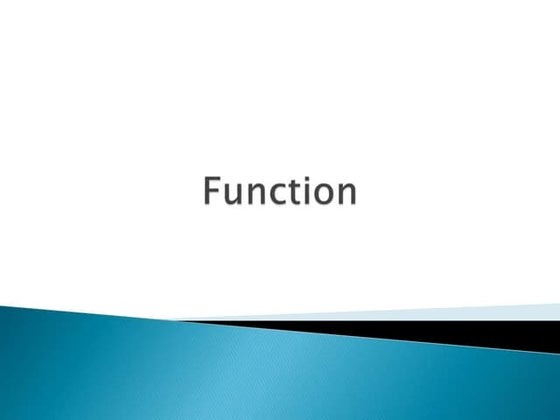





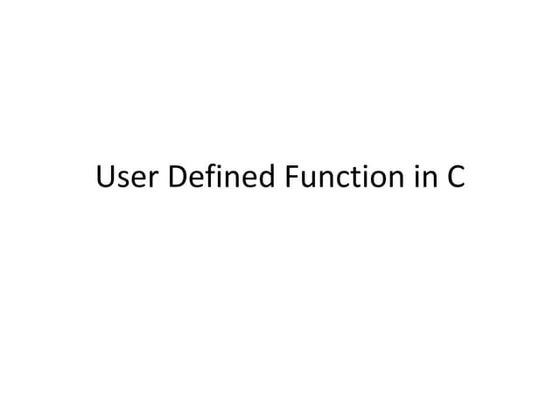













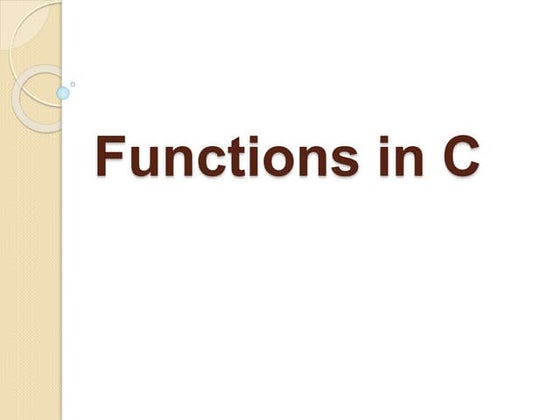


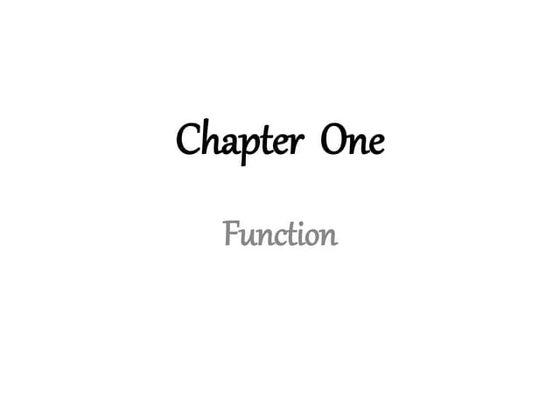

![Chapter_1.__Functions_in_C++[1].pdf](https://cdn.slidesharecdn.com/ss_thumbnails/chapter1-230901115452-13a8ca1c-thumbnail.jpg?width=560&fit=bounds)
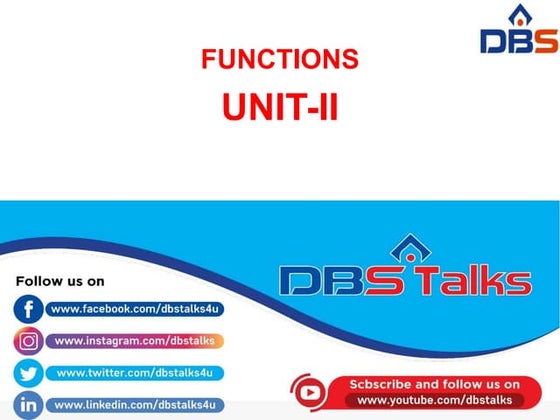


![Windows 8.1 Pro Activator Crack Version [April-2025]](https://cdn.slidesharecdn.com/ss_thumbnails/lecture9-250228130043-bd676d0e-250401141425-60508047-250401150607-9cd2b2bd-thumbnail.jpg?width=560&fit=bounds)


![[Roundtable] Choreo - The AI-Native Internal Developer Platform as a Service](https://cdn.slidesharecdn.com/ss_thumbnails/choreo-deck-250328074645-511dded7-thumbnail.jpg?width=560&fit=bounds)














